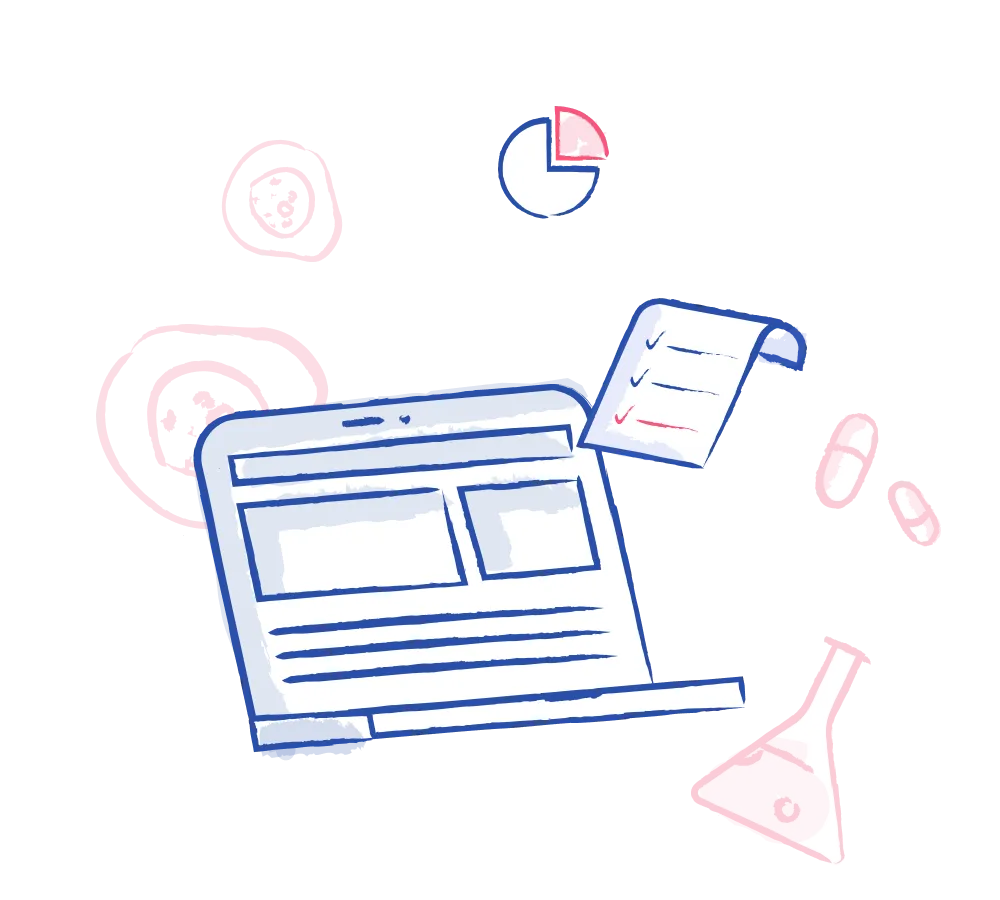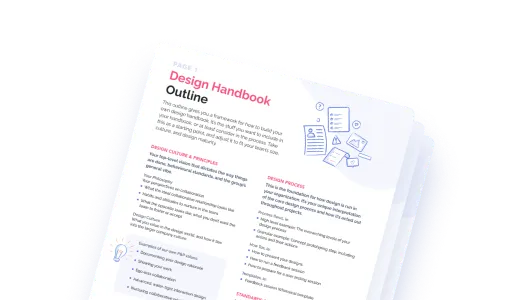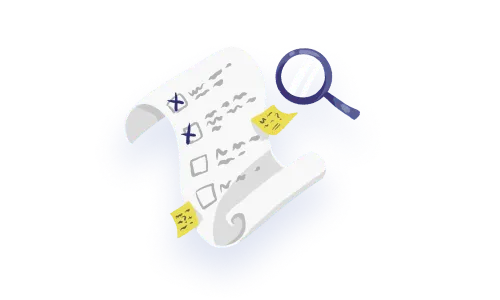

Here’s a quiz: what’s the kind of UX that’s not web, mobile apps or things that regular Joes use? That leaves just one possibility: Enterprise UX.
Enterprise UX has been defined here and there; mostly, this field is focused on software people use at work. We use the term ‘software’ when describing what enterprise UX applies to because the word implies a depth of interaction and pure power that the term ‘web app’ just doesn’t quite carry. Enterprise software can also be referred to as B2B SaaS (software as a service) as well.
If you find yourself suddenly designing these complex software applications, you’ll need to get situated with the type of thing you’re working on and integrate and emphasize some parts of your existing UX workflow. There are unique parts of the UX workflow for enterprise applications, it’s not the same as what you’d expect for a consumer app or web project.
Traditionally, consumer apps have taken up the UX budget because when individual consumers table flip about the UX and leave, this has a real and immediate impact on businesses. Cancelling a consumer experience is very simple and can happen in a minute or less in many cases, so UX has been a necessity.
Enterprise applications have been deliberately set up to avoid speedy cancellation. Signing longer-term contracts and having more expensive setup processes: many products rely on the dynamic of being ‘hard to leave’ rather than being hyper-relevant, useful and enjoyable to use. However, there are a lot of products in the enterprise space which are month-to-month commitments, and thus the barrier to exiting them is lower. Effectively this puts them within the same playing field as consumer products, so having good UX becomes really important.
New startups are also forcing established B2B SaaS products to step their UX game up, as their “MVPs” and early versions are much more slick, easy to use and generally less clunky than incumbents. These new companies have less difficulty building and maintaining features due to less tech debt, so established, clunkier products are feeling the competitive heat🔥 (slash burn).
It could be argued that consumer digital experiences are also elevating our overall UX standards, so the perception of the UX quality by customers is causing more dissatisfaction by virtue of what they are comparing their work UX to.
So what do you get when you combine the refinement of consumer experiences with vastly more complex and in-depth interaction requirements and a LOT more data?
Working on complex products demands an emphasis of certain parts of the UX process and requires specialized expertise. Let’s dig into specific areas you can grow and adapt your UX workflow as someone working on complex products.🤸🏽
Being able to efficiently parse, gather and synthesize complex information is key to thriving in an enterprise software environment. These domains tend to be intricate and involve subject matter experts (SMEs) as well as potential legal and compliance frameworks to get familiar with (very important in biotech and fintech!)
At P&P we onboard to new enterprise UX design projects so often that we have it dialled in to the max. Here's a look at some of our onboarding processes:
During onboarding, the organizational, business and product context is important to understand when you're designing a fresh build or redesigning an existing product.
Some things to hone in on:
The subject matter, complexity of the software and lots of other variables make it so truly you can’t do it alone. Collaboration needs to be second nature whether that’s between designers, SMEs, BAs, devs, product managers or QAs. People’s collective brains need to be leveraged to make something good come out of the other end.
The product squad is really tightly knit on good enterprise software teams. We explore the product manager & designer relationship in this article, but key relationships also need to exist between design, product, dev and AI engineers or ML engineers.
It’s also key to identify the right subject matter experts, who can contribute to the shaping of the product direction the most. More is not always better, though in super technical fields, like biotech, you need a few PhDs in the room most of the time.
Most designers lack the experience of working with real, hardcore data—You can peruse any design showcase platform and see a huge lack of real data representation in favour of simplistic design concepts. While we love a good pretend representation of data, this is a big differentiator between those more comfortable with consumer experiences than enterprise or B2B SaaS contexts. In the wide world of business, it's necessary to translate data into action for robust designs that work. (And it’s no easy feat, our article on dashboard design is just a drop in the bucket). This is where a truly specialized team of enterprise UX designers shine.
In enterprise UI design, you need to design any data vis around a variety of users with highly different motivators—An IT person would care about different things than an HR who works on retention in an organization, andthe data experiences need to reflect this diversity.
Understanding and designing for enterprise often means you're working with nuanced scenarios that will influence your approach and strategy. What’s nice about interviewing people about software they use at work is that they often have a flow or set of tasks they do regularly that they can explain to you with ease. Looking “over their shoulder” and mapping that out can be significant in unlocking design recommendations and vision.
Focus on:
Often in enterprise application UX, we have a dynamic of a buyer and a user being different people with different roles. You might see “demo features” in your product i.e. products that look cool in a demo (which sells the product to a buyer), but aren’t really used by end-users.
Enterprise UX designers appreciate that different personas have different goals of course, they also have different levels of permissions and access to functionality in your application. You’ll have to know how this is set up, in order to design for it.
Enterprise UX tips:
With more technical subject matter, you cannot get away with lorem ipsum or placeholder text like you might in consumer products. UX copy and the precision of that copy is serious business in enterprise UX. As you’ll see in user testing, the words on the screen can distract people to the point that your session isn’t recoverable.
Enterprise UX tips:
Users of enterprise products may depend on them every single day as their main tool for work, so strong design makes a great impact on their day-to-day. The right design can catapult efficiency, reduce rage and bring out that person's full work potential, whereas weak UX can have amplified, real-world ramifications, ie: allowing them to make critical errors with no way to retract it. This is especially crucial in areas like fintech and biotech.
In general, enterprise UX often deals with workflows thathave multiple steps, actors and timelines at play. There’s a lot of inter-dependence between these factors, and things can get weird fast. Accounting for edge cases and nuanced "unhappy paths" are fundamental, as is communicating the right system status in a timely and responsive manner.
The stakes in these tools aren’t superficial; they don’t just cost the personal energy of a person, decisions in software may be life or death (think the world of medicine and transport). Our responsibility as makers of these products can’t be overstated.
Enterprise UX tips:
Oddly, in our field of user experience at large, we have a lot of superficial introductory interaction education, and not a lot of complex, in-depth scenario-based education resources. Most of us are winging it, building off consumer product patterns, and testing as we go.
If you assume that your features and functionality are more complex than average, this means your brain and the “why” of what you’re doing needs to be even more clear. The “why” can be based on a myriad of variables, technical constraints, laws, user needs, best practices, data, etc etc.
Express yourself clearly in two ways:
Document it or it didn’t happen. Interestingly enough, getting good at capturing complexity requires your creative hat to come on…or your sparkly creative shoes, depending on your vibe. (Check our UX Documentation Guide)
Written documentation or mockups aren’t enough in enterprise UX. You need to express the logic of the system, flow, industry, and versions/released in the right way as a matter of second nature. You also need to write words that others can understand and use to implement, train, and build off of. You chose the combined ways to express this logic, often written documents combined with visuals work very well.
Design documentation tips:
Now hopefully, you will have gained an appreciation for the truly specialized nature of UX design for enterprise products. At P&P, we are pros at this and create new product concepts and redesigns for companies around the world - regardless of the domain or vertical, the problemset always has similar challenges (and processes and expertise to match them!).
Enterprise software is exciting! We’ve said it before and we’ll say it again. The potential of innovation in the world of workplace software is insane and it’s already happening. The advantage we have is that in the workplace there are some solid business cases which justify new technology. On top of that, employees are generally trained on software at work, so we can accelerate adoption and experiment with new technologies with a captive audience.
We see the future of screen-free interactions, tapping the power of AI, and offering fun and atmosphere in these tools as just some of the innovations we’re going to see in the near future.
Design patterns you see in consumer products sometimes translate to the enterprise environment but not always (though the UX for enterprise applications isn’t always that different from consumer experiences). We jotted down a quick list of 5 enterprise UX patterns we’ve seen fairly often that help us design for a diversity of need.
The wonder of enterprise products is real. Seeing a small sample of the types of products out there gives us a glimpse into the ingenuity of some of these industries and the humans within them. The very existence of these software tools is kind of delightful.
We assembled a small list of some of the software we’ve come across in our travels (they are mentioned to give you more clarity on the types of things out there, not to promote anything).
Whether you’re entering the enterprise software world for the first time, or you’re brushing up and stepping your game up, hopefully these UX workflow tips for enterprise software inspire you and spark some exciting possibilities for your work life.
Whether you’re entering the enterprise software world for the first time, or you’re brushing up and stepping your game up, hopefully these tips and added context on enterprise software inspire you and spark some exciting possibilities for your work life.
It’s a challenging world of UX, and gives us so much connection to our collaborative side, our analytical reasoning side, and our courage to take on challenges we have no clue how to solve at first.
Do a mini UX audit on your table views & find your trouble spots with this free guide.

Be the first to know about our upcoming release!























































